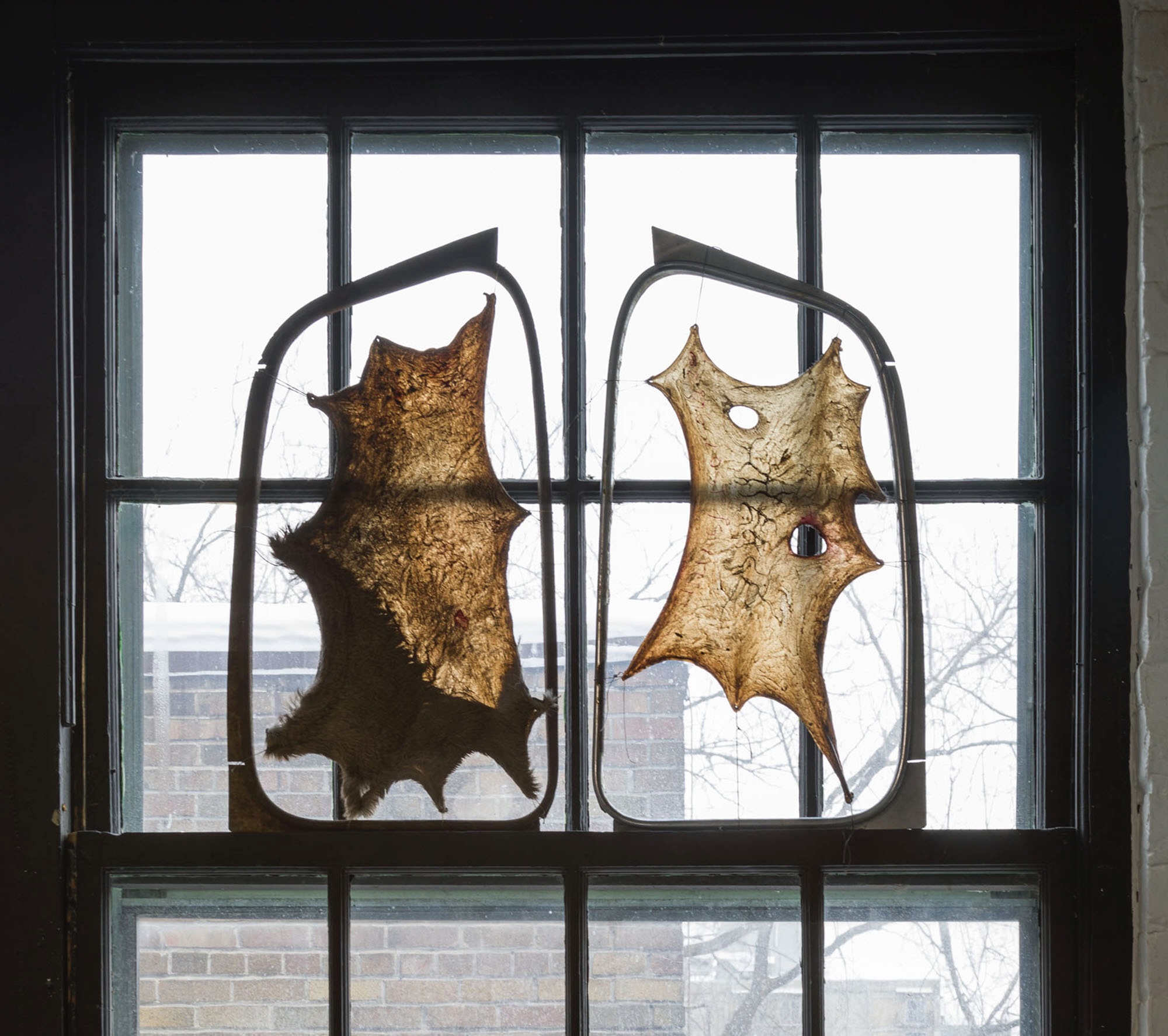The show features works by Alex Patrick Dyck, Cléo Sjölander, Ariane Gagné (éli del), Tom Roeschlein, Julien Parant-Marquis, Justin Apperley, Jason Van Hoose, Dylan Weaver and Paul Jackson Burgess.
The morning after my visit to Datura, the latest offering from Espace Maurice, I was confronted with a seemingly endless stream of people walking past me in their Sunday best: puffy jackets, Arcteryx tuques, and shiny sunglasses. They all appeared to be going to brunch, dressed up in their finest to go spend more money; a sign that the capitalist machine is happily turning.
I noticed it because it couldn’t have been more different than what I was confronted with at Datura the day before. The group show, curated by the gallery’s founder Marie Sègoléne C. Brault, a Concordia graduate, features a wide variety of artists and practices whose works are entangled with the darker side of capitalism.
All the works in the show were made in Youngstown, Ohio, many of them as part of a 10-day residency that took place during last fall. Through their subject matter and materiality, the artworks reflect the long lasting effects felt by a city that suffered greatly from the closing of factories during the 1970s. A number of the pieces were made by reusing materials like car window frames or rusted nails.
The residency came to be—thanks to Brault who, upon viewing the documentary Greyland (dir. Alexandra Sicotte-Levesque), was taken with the story of Youngstown and got in touch with one of the local residents featured in the film, Rocco Sait. This marked the start of a collaboration that resulted in the Ohio residency in which artists from New York, Montreal, the Yukon, and Youngstown gathered to create the art currently on display at Espace Maurice. The show represents a small fraction of what was produced during the residency, but it is accompanied by a catalogue that documents the works as they were installed in Youngstown at a warehouse owned by Sait.
This show considers the lived experiences of those born and raised in the shadows of shuttered steel factories, and poses the question: What about those who stay? The answer is found in the form of sculptural works that use wood, ceramic, nails, candlesticks, wrought iron, and plastic tarps used in construction, as well as in the form of paintings that reflect on the violence bred by economic inertia.
In some ways, the show’s curation mimics the imagery of places like Youngstown or Detroit, which are all too often defined by the distant memory of economic prosperity—images of abandoned mansions in disarray dominate the visual landscape in these places. This show engages with this visual mode, but with an added level of care and intention.
On the floor beneath a painting on one wall is a selection of carefully lined up tchotchkes, like a silver letter opener and a small heart-shaped piece of resin with nails sticking out of the top. A similar object sits atop one of the light switches along another wall. The show rewards a desire to look in unexpected places—the floor, the light switch, and the window.
The show’s namesake flower, datura, also known as moonshade or devil’s weed, is a member of the nightshade family. It is a poisonous flower, with psychoactive effects that can induce delirium. Indeed, there is a sense of delirium in the show. One can easily get lost within the works on display, and I would encourage everyone to do so.
Datura will be on view at Espace Maurice until Feb. 16.
